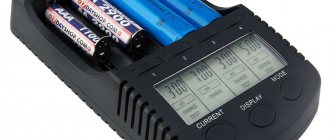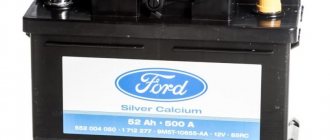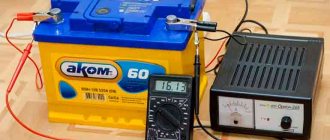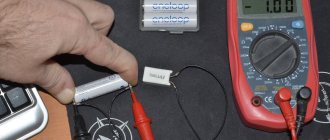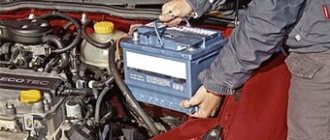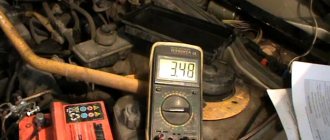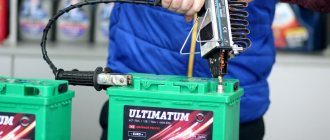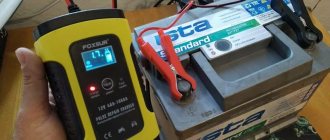The constant development of technology causes the development of its power sources, including batteries. If previously models with liquid electrolyte were most widespread, now gel electrolyte is increasingly being used as the basis for chemical reactions. Despite their high cost and difficulty in maintenance, such energy storage devices have a number of key advantages.
Comparison
What is the difference between a gel battery and a regular acid battery?
It contains the electrolyte not in liquid form, but in a silicon-bound gel substance. Accordingly, all the advantages of such an energy storage device grow from this factor. This:
- Long service life. The gel is not as chemically active as the alkaline-acid liquid in conventional batteries. There are cases of restoration of drive performance characteristics 12-14 years after the end of its service life. Yes, the gel dries out, but the rate of its deterioration is much lower than that of a conventional electrolyte.
- Virtually no maintenance procedures required. Therefore, gel energy storage devices in 99% of cases come in a hermetically sealed case, without the possibility of gaining access to the chemical fillers of the battery cans.
- Very weak sensitivity to shaking, swaying, and even complete turning over. What makes the device ideal for use in small equipment - scooters, hydraulic and regular motorcycles, mopeds. Such gel batteries are popular in the aircraft industry and among shipowners. Smaller sizes compared to classic batteries, with equal capacity, make them ideal for various devices, such as uninterruptible power supply devices.
- Low self-discharge. No more than 20% of energy leaves the drive when there is no load.
- A greater number of charge-discharge cycles compared to classical types allows longer and more intensive use of the energy storage device.
- Less sensitivity to temperature changes.
- No liquid acid solutions. Therefore, even if the seal of the case is broken, the battery will continue to work. This also provides greater safety for humans, since the gel does not flow.
- We can allow the battery to be discharged very low without impairing its reverse charging capabilities.
But as they say, the advantages of the drive also come with some disadvantages in its use, this is most noticeable in particular when charging gel batteries:
- Overheating when recharging. Batteries of this type are very sensitive to overheating. If the gel boils or peels off from the electrodes, then not only can the housing rupture as a result of the release of gases from the boiling gel, but the chemical cycle of energy conservation will also be disrupted. Accordingly, the device will no longer save energy.
- Memory effect. If the charge is carried out incorrectly, the efficiency of the energy element becomes much lower.
Advantages and disadvantages
Gel battery manufacturing technology has the following advantages:
- No electrolyte leakage in any position.
- Long service life - up to 700 cycles (sometimes up to 1000 or more).
- Good current performance even with reduced capacitance.
- Maintains functionality in any position: tilted, upside down.
- No fumes hazardous to health.
- Higher starting current, which is important when operating the machine in winter.
- No fear of temperature changes and preservation of properties at high / low temperatures.
- Possibility of discharge to zero without serious consequences for the battery.
Minuses:
- Strict requirements for operating rules.
- The need to use automatic chargers with current/voltage regulation.
- High price due to the complexity and high cost of the technology.
- Risk of battery damage due to voltage/current surges.
Safe charging with a conventional charger
Conventional chargers are not very suitable for charging gel drives, however, they can be used. How to properly charge and charge a gel battery with a regular charger? The basic safety principle for the subsequent operation of the battery is control and correct calculation of current components.
First you need to calculate how much current in amperes is required to charge the battery. To do this, information is taken on the maximum capacity in ampere hours for a specific model (often written directly on the case), and from there 10% is calculated for fast charging, or 5% for a safer current used. For example, the battery has a capacity of 150 Ah (ampere hours), which means the maximum charge current should be set to 15A, and ideally (but the charge recovery time for a gel battery will double) to 7.5A.
As for the volts supplied from the charger terminals, they must be set to the position intended for the standard battery voltage, 6V, 12V or 24V.
Now, as for chargers that do not have a current regulator. It is imperative to lower it, otherwise there will be unforeseen consequences. Amperes can be reduced by connecting a load in parallel to the electric charger - an incandescent lamp. You can use a buffer lead-acid battery for this. With a lamp, the voltage will also drop, but as for the buffer battery, it’s interesting. Scheme:
In theory, a regular battery will lower the amperes, since it is a stronger consumer and is located at the beginning of the parallel circuit. The volt parameters for both batteries should be the same. The remainder of the amperes will go into the gel electrolyte, which will help produce a “softer” charging. Only after assembling the circuit and turning it on should you check whether the gel storage has started to heat up. This can happen if the regular one is faulty.
Specialized chargers for gel batteries
There are also specialized chargers that, having low ampere output currents, allow you to charge such drives either in a fully automatic mode or semi-manually. Such chargers are made taking into account the charging characteristics of gel batteries. The most complex of them allow you to restore batteries of different voltages. When purchasing simpler ones, you need to pay attention to the correspondence of the output current (if there is no switch).
Reference! It is not recommended to charge gel batteries more than a couple of times a year.
Basic mistakes
When charging a gel battery, car owners make the following mistakes:
- Increasing the permissible voltage threshold above normal. The result of this step is the boiling of the gel.
- Attempts to “revive” a swollen battery. This will not give any results.
- Use conventional chargers designed for acid-based devices.
- Driving the vehicle until the battery is completely discharged. It is important to note that a completely dead battery is much more difficult to restore.
Requirements
Basic requirements for specialized memory devices:
- Regulation of the charging voltage of the gel battery.
- Adaptation of the current used for various external conditions (air temperature in the room where the charge level is restored).
- Adaptation of the number of amperes, depending on the temperature of the battery itself at various stages.
- Automated voltage change, depending on the stage. It is desirable to have a charger that allows saturation of the battery in three stages: 1 - increased voltage;
- 2 - constant voltage support, with a decrease in the number of amperes;
- 3 - minimum recharging with a minimum of volts and amperes.
Distinctive features from conventional batteries
A gel battery is an optimized version of the classic battery, which has a similar operating principle, but a different design.
The main feature is the replacement of the electrolyte-liquid with a gel.
The advantage of the technology is to protect the working fluid from leakage, regardless of the position of the housing, which made the battery in demand among owners of motorcycles, cars, and watercraft.
Full charge time
How long does it take to charge a gel battery? It is very easy to calculate - the battery capacity ampere*hours is divided by the set current of the charger. The result obtained is the time in hours that the battery requires to be completely saturated with energy. This time cannot be exceeded! Overheating will begin. It is even recommended to keep charging a little less time. Let the battery not be charged to 100%, but at least it will remain intact.
Advice! When charging, if the battery becomes hot, it must be immediately disconnected from the charger and allowed to cool. If this is not done, the boiling gel will destroy the battery beyond repair. In addition, when recharging, it is worth reducing the current.
How to check a gel battery for the level of already accumulated charge, so as not to miss the moment of shutdown? To do this, use a regular multimeter. The battery is periodically disconnected from the charger and the voltage at the storage terminals is measured. If the voltage there rises above 12.6V for 12 volts, 6.6V for 6V, or 24.6V for 24V, then the charge is fully charged. There is no point in charging further, especially since this can lead to heating of the element of the battery collector cans.
Maintenance of gel batteries
Over time, the gel dries out, losing its electrolytic properties. This happens, of course, at a lower speed than in lead-acid batteries. But this is a common reason for a decrease in battery efficiency.
How to restore and revive the gel battery in such cases? The density can be increased to a certain limit by adding distilled water to the battery jars. To do this, carefully remove the caps on each of the battery tanks, then the rubber plugs, then pour the distillate into each with a small 2 ml syringe. With the plugs open, the battery is left for three to four hours to allow the reaction to occur and the liquid to be absorbed into the gel. Check the voltage level at the battery terminals. If everything is in order, the caps are put back in place and the battery is charged.
Actually, increasing the density, as well as periodically recharging up to 100% twice a year, is actually all the available maintenance for gel batteries.
Life time
As for the service life of gel batteries, it is worth highlighting the stated and actual figures.
For example, many manufacturers claim that their GEL batteries can last about 10 years. But this does not guarantee that in your specific case such a battery will be able to work out the entire specified period without problems.
Actual service life depends on exposure to extremely low and extremely high temperatures. At less than -30 degrees Celsius, electrochemical processes in the GEL battery will slow down, and at more than 50 degrees their intensity will increase. High temperatures also accelerate plate corrosion. If you do not maintain a constant high charge, you may encounter a sulfation problem. But you can’t keep such batteries on charge either.
Therefore, in order to bring the actual service life closer to the declared one, it is important to avoid deep discharge and overcharging, choose only dry rooms for battery storage and operate the battery in a temperature range from -35 to 50 degrees Celsius.
How to check a gel battery
Some types of testing of gel drives:
- First you need to lightly shake the battery while listening. If an extraneous sound is heard inside, then with a 90% probability the battery plates have come loose. This type of storage device can only be recycled. It will not be possible to restore it at home.
- If the battery is swollen or even one bank on it is “swollen,” it is also beyond repair.
- If everything seems to be intact, but the voltage on the contacts is zero, and the gel battery does not take a charge, then this is a classic discharge of the device to zero. A charger will help here; it can be used to “push” the battery so that it begins to gain energy. Why do they first try to charge it with an increased current (for 12V -15V, for 6-8V, for 24 - 26V). As soon as the battery begins to charge, the voltage is lowered to standard charging parameters. In this case, the drive's operating parameters will most likely deteriorate.
What it is
In fact, gel batteries for cars are called lead-acid batteries, the main distinguishing feature of which is the use of a thick absorbed electrolyte instead of traditional liquid. Special additives give the electrolyte a gel-like state. They are labeled as GEL batteries.
This technology involves the production of completely sealed and maintenance-free batteries. Moreover, their operating principle is no different from all other lead-acid power supplies.
To thicken the electrolyte, silicone filler is added to it.
